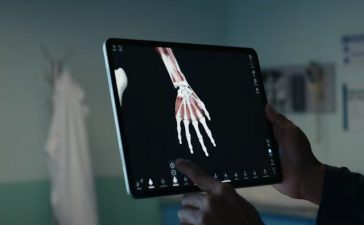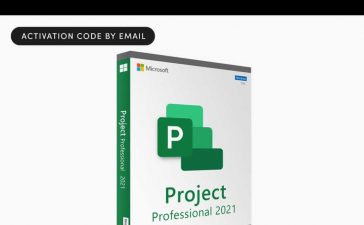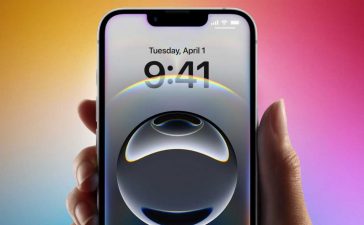Often associated with gaming, virtual reality may one day have a place in the office too, providing a more immersive experience and greater sense of presence than is possible with a video call.
That’s the idea behind Meta’s Horizon Workrooms, a virtual 3D environment where colleagues can meet and interact just as they would in person, regardless of where they are physically located. Although a VR headset isn’t required to participate in a Workrooms meeting, when accessed via the company’s Quest Pro — a high-end headset launched last year and aimed at business use — attendees’ avatars are capable of a range of expressions, due to the headset’s five internal infrared sensors, which can track a user’s eye and facial movements.
It’s also possible to work solo in a virtual private office via the Workrooms app, which is publicly available in beta and provides access to a user’s computer monitor and two additional screens.
Meta (formerly Facebook) has committed billions of dollars to development of VR technologies in recent years, but it’s early days for the use of VR as a collaboration tool, and the technology is still evolving. There are currently some limitations around virtual environments when it comes to everyday workplace use, particularly on the hardware front. The Quest Pro’s weight makes extended use uncomfortable for some, while battery life, which Meta states can last a little over two hours for productivity purposes, is another constraint to regular use.
Cost is also a factor: most businesses would need good reason to pay $1,000 (reduced from $1,500 at launch) for each Quest Pro device. And there are question marks over data privacy — not exactly a strong point for Meta historically — with the Quest Pro’s eye and face tracking able to collect a significant amount of user data. (Meta says that this data does not leave the device, however.)
The Horizon Workrooms software is also a work in progress, with no date set for general availability, even if the app is now widely available for use. Ahead of a full launch, Meta is continuing to refine the user experience, which currently lacks the simplicity of joining a video meeting, for example.
 Meta
MetaMike LeBeau, founder and product lead, Meta Horizon Workrooms
But while it remains to be seen whether VR will become commonplace in our working lives any time soon, the technology has plenty of promise when it comes to enhancing the meeting experience. As part of a demo of Workrooms and the Quest Pro headset, Computerworld recently spoke with Mike LeBeau, founder and product lead for Horizon Workrooms at Meta, about designing virtual environments and why VR could become the preferred choice for team meetings in the future.
Following are excerpts from that interview, edited for clarity.
On designing a VR platform for work
“We really felt that this technology has a lot more potential than just gaming. We wanted to figure out how we can make it become a part of daily life in ways that previous computing platforms had to do before they reached mainstream use. When we built Workrooms, we were trying to bring a bunch of new technologies together for the first time to try to achieve that, and say ‘What does it take to actually make the technology usable for a utilitarian work need rather than just for gaming?’
“We had a lot of interesting stuff starting to bubble up when we started the project. There are all these new technologies that we use, whether it’s mixed reality, hand tracking, remote desktop streaming, spatial audio, or expressive avatars. There was this perfect storm of technology coming together, where you could make the work experience start to feel viable and compelling.
“One of the other challenges with VR historically has been that it’s hard to resist the temptation to [overcomplicate the interface]. You come to this medium and you think you can do anything with it: you could be on the moon, you could be in a rocket ship. All those things are awesome for games — and can be really great in some work contexts as well — but [the range of possibilities] causes people to want to do everything all at once. This is actually against the design ethos of what we’ve been trying to do with Workrooms, which is to think about how we simplify it so that people, without necessarily being hardcore gamers or having a pre-existing love for VR, could still find value in what we’re doing here.
“So we’ve tried to design a bunch of simplifying constraints into the experience, where instead of ‘Oh, we can do anything,’ we say, ‘Well, what are the few things we need to do really, really well, to make sure that people can have a productive experience in it?’ The philosophy is: how do we get the experience out of the way as much as possible, so that the feeling of social presence and those value [propositions] around getting things done better can take the center stage and shine?”
On VR meetings vs. video calls
“It’s very likely that, for quite a while, there’s a world where these things coexist. We don’t see ourselves as trying to completely displace video calling, at least not at this stage. As the technology gets much more advanced — and much more seamless and comfortable — there will come a time where the idea of using a headset instead of a monitor might start to make sense for many tasks. Maybe by then you can imagine every meeting being a virtual meeting. But in the meantime, it’s more about ‘What are the times in your life that it’s most useful to use a headset?’
“What we find so far, both from our own usage as well as what we’ve seen from early usage from outside, is that there’s two scenarios that seem most compelling:
“One is for a large group, where the conversation doesn’t flow as well on a video call. Those are harder to arrange [in VR] — you have to have everybody in a headset at the right time — but we see companies and teams starting to do that, especially for planned meetings. Maybe it’s a standup where we all talk about our progress: those kinds of moments are the ones where the delta between what you can do in VR and what you can do in video are more obvious.
“The other case is when you have a specific task you’re trying to do, and you want to be shoulder to shoulder with someone. We have only just scratched the surface of this so far, with things like the whiteboard and brainstorming [features in Workrooms]. But these types of use cases — of which there are tons — are the ones where getting together in VR feels worth it. If it’s just a chat, where literally all you’re doing is a 10-minute face-to-face meeting, sometimes video chat will be preferable for that, because you can see the actual face of the person, you can see whatever context or space they’re in.
“We’re not trying to say that [VR] is universally better, but there are so many scenarios where the primacy you place on being physically together is so high. For those [use cases], we think we can offer an intermediate between having to be on a video call, where you lose that [sense of presence], and having to literally fly to where somebody lives in order to be next to them.
“That is the power of VR from our perspective, and the reason why we think it’s worth it, especially in contexts like an hour meeting a day, to put on the headset and work with others.”
 Meta
MetaThe design of Horizon Workrooms is aimed at simplicity and enhancing social presence, according to Mike LeBeau, founder and product lead.
On working solo in VR
“We’re looking at what it looks like to be a solo worker in VR. Is that compelling? Certainly, most people are not yet ready to spend eight hours a day working from a VR headset, which are probably not really made for that yet. Battery life, comfort… all those things all play a role in the length of time [that people will wear a headset]. Again, those are things that the hardware will continue to improve over time.
“But in the meantime, there are still reasons why we think that’s [an] interesting [use case]. One [example] is what we call the ‘personal office’ in Workrooms. We’re doing some cool things that start to explore the value of the ‘solo’ scenario.
“One is [access to] a really large virtual screen. Say you’re traveling and you’re in a hotel room. You’ve got your laptop with you, but you’re working on a coding project, or a statistics project, and you need a lot of screen real estate. With your laptop, you get your little 13-inch screen. VR becomes something you can also throw in your bag with you, put on your head when you’re in the hotel room, and then, suddenly right there at the same desk in your hotel room, you have three massive screens. Just the spatial real estate available in VR becomes an interesting value [proposition] for solo [use].”
On a timeline for the full release of Workrooms
“We don’t have a timeline that we’re sharing, or are even entirely sure of internally at this stage. We’re really looking at beta as a way to make sure our customers understand this is still a thing we’re learning from. This is still early; it’s still subject to change as we figure out what’s valuable to people.
“But, that said, we’re certainly working a lot on making sure that the core experience is as frictionless as possible. One benefit that video currently has versus VR is that it’s usually one ‘click’ to get into a video call. That’s gotten really robust and effective over the last few years. VR has a long way to go before that’s true: there are still a number of steps you have to go through right now to make that possible.
“When we get to the point that we believe [the technology is ready] for a much larger audience, it’s going to [require] making sure that this is as seamless to use as a video call, or else friction will win out most of the time. If it’s faster to just get on a video call, then people will do that. That’s an example of an area we’re working hard on.
“At the last [Meta] Connect event, we talked about a mixed reality [feature] that we’re working on, called Magic Room, which is this idea of letting people who are in the same physical space join a workroom together and share it with others who are remote. This means using the physical space to host the meeting, rather than a virtual room. So [there are] a lot of different directions to figure out where there’s value.
“The way I think of it is that we’re reducing the challenges to adopt VR as much as possible. And that goes up and down the whole stack: from hardware and comfort up to OS level, making sure it’s always smooth and easy to use.”
On headset facial tracking and user privacy
“It’s something we take very, very seriously, obviously, as these devices do receive a lot of data from your face. That is all processed locally on the device and not shared with Meta. We build models separately from that to make sure [the device] works well for you. That’s not data that gets shared back to Meta. You have control at all times to turn that on or off.
“You’ll have noticed when you went through the setup that it asks you, ‘Do you want to give this app access to the facial expressions?’ That’s something that other apps can request as well. That allows the app to show the [facial] expressions [in VR], but it does not allow it to save facial data. And it’s the same with Meta; we do not share that data up to Meta — it’s purely on the device.”
On partnering with Microsoft on workplace VR
“We’ve been really focused on fostering that ecosystem; Microsoft being a major partner in that effort is very exciting. They’re working on a Windows 365-type of experience that would allow you to run an app to access your Windows machine. They’re working on a ‘Microsoft Teams for VR’ experience, which is their own take on how to collaborate in VR, entirely separately from Workrooms. And then we’re also working with them on how to integrate Teams calls into Workrooms.
Part of what people want is to be able to use their existing tools and then also benefit from VR. We want to make it possible for people who are in a workroom to say, ‘Let’s just connect that Teams call here and have it within VR.’
“I think we’re both very much in this phase of learning — and learning with each other — about all these different use cases. So it’s been really exciting to have them as a partner on this stuff.”
Copyright © 2023 IDG Communications, Inc.












